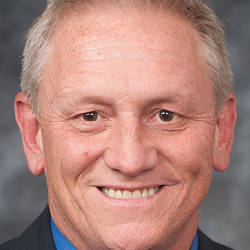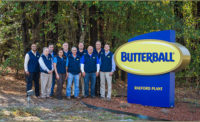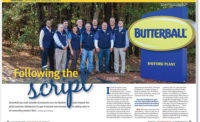It has been a busy couple of years, but the gamble that Butterball LLC has taken to modify its operational approach appears to have paid off, spurred along by several headline-making acquisitions in recent years.
The Garner, N.C.-based turkey processor is reaping the rewards of its efforts to redefine its approach through tough economic times and the growth in popularity of turkey beyond whole-bird Thanksgiving feasts among consumers.
Additional Butterball content
Check out Andy Hanacek's exclusive Q&A with Mike Bliss, vice president of Operations for Butterball, and Frank Koekkoek Jr., complex manager in Raeford, and our exclusive videos from the ribbon-cutting ceremony of Butterball's Raeford, N.C., plant.
Early on, Butterball recognized the changing landscape of consumer preference and reacted accordingly, developing a portfolio of value-added products (frozen turkey burgers, sliced turkey deli meat, etc.). Before the shift in strategy, the company had kept production at a co-packing distance while it gauged whether the products would be long-term anchors or only fad-like flashes in the pan.
“It’s hard to grow the whole-bird side of it, although, with some of the innovations you’ll see in the marketplace this year with our packaging and our fresh enhancements, we’re doing that still,” says Kerry Doughty, president and CEO. “But going back eight years ago, we wanted to take our commodity business, our meats that we were selling to other people, and value-add those products ourselves.”
The clarion call within the company trumpeted development of ways to utilize all the meat from each bird in-house — rather than selling it on the commodity market or shipping it off to a co-packer.
The National Provisioner featured the first major sign of this commitment in August 2013, when the renovation of the company’s Carthage, Mo., plant, was highlighted, featuring Butterball’s first in-house burger-processing line — producing a product that had been co-manufactured. The company simply hasn’t looked back since.
“We put our first line in three years ago and sold it out, put our second line in last year and sold it out, so now we’re putting in our third line in [2016],” Doughty says. “That’s a lot of burgers, and we’re not done with them yet.”
Doughty called the work done in burgers one of the “aha” moments of the past few years, and explained that Butterball has taken that experience and applied it to other value-added products.
“We’ve had similar opportunities with sliced lunch meat, expanding it to fully-cooked meatballs and working on bacon and sausage right now,” he explains. “When you fish, you go where the fish are — we want to work on products customers and consumers want.”
Stacking the deck
Early returns on the strategic shift were healthy, but within the last two years, the gamble has really begun to pay off.
“[The strategy] has led to an expansion not only of products, but also production facilities,” Doughty says. While this growth would be viewed as a success under normal circumstances, it effectively has been dwarfed by two massive acquisitions that feed into the “in-house” strategy — processing plants in Montgomery, Ill., and Raeford, N.C.
When analyzed individually, the Montgomery (Gusto Packing Co.) and Raeford (House of Raeford) processing plants greatly impress, but they don’t pack the same punch until taken in context together.
|
“If we look three, four years back, Mount Olive had two tray-pack lines, and Carthage was not in the burger business. Of course, we didn’t have Raeford, and we had two chub machines: one at Mount Olive, one at Longmont. In total, we maybe had 80 million to 90 million pounds of tray-pack and chub capacity. Today, once we complete all the projects we’re in now, we’ll push 250 million pounds in retail, tray- and flex-pack, burger and chubs. … So now we’re talking about, what do we do next? Where do we put another chub line to give us a total of four? Where do we put the next tray-pack line? It’s a very exciting time at Butterball, and directionally, it’s absolutely where we need to be going.” — Mike Bliss, vice president of Operations, discussing Butterball’s transition toward value-added production from his department’s perspective, as they have installed, renovated and shuffled processing capabilities amongst the company’s seven plants in the last several years. Photo by Scott Clevenger |
For perspective, Butterball’s Mount Olive, N.C., processing plant is monstrous (self-proclaimed by Butterball as the largest turkey-processing plant in the world), with 525,000 square feet of processing space. Make no mistake, the facility remains Butterball’s crown jewel of operations.
The Montgomery and Raeford acquisitions combined, however, add nearly as much processing footprint to Butterball’s capacity — when Raeford’s renovation is complete, the two plants will rank second and third behind Mount Olive among all Butterball processing plants.
“The original intent of [acquiring Montgomery] was to take its unused capacity and utilize it for turkey processing,” Doughty explains. “It was in a good location relative to our raw-material sources, and our foodservice and retail distribution centers, but from a merchandising standpoint, it is helpful to be a multi-protein company.”
When Gusto Packing was acquired by Butterball in early 2013, Montgomery was in the business of pork processing — and it still is. Doughty says turkey production has just gotten under way at the facility, as Butterball has leaned on the expertise of the employees on the pork side of the business.
“Our sliced turkey bacon has been co-packed for us by a wonderful co-packer and a great company, but we’re bringing it in-house and have put a brand new, state-of-the-art production line in at Montgomery,” he adds. At presstime, samples had already been produced, the product looks good, and the line is expected to give Butterball 25 million pounds sliced turkey bacon capacity.
Pair of aces
Montgomery represented one step toward self-sufficiency, yet Butterball still needed more — and that next step was announced in February 2015.
“We had just come off the Montgomery acquisition, but the bottom line was, we were still co-packing a lot of product with a multitude of different, very good co-packers, shipping raw material all over the country, dealing with freight and shrink and everything that goes with it,” Doughty recalls. “Now, we [see] a 200,000-square-foot building laid out to be a perfect turkey-processing facility, sitting on a hundred acres, with 350 hourly associates that have an average of nine to 10 years of seniority — it was almost turnkey.”
Although Raeford was in great shape and “almost turnkey,” there was still plenty of renovation work that needed to be done — Butterball decided to invest $55 million to build it out to Butterball’s specific needs and standards. Most of the interior of the facility was ripped out and replaced, including most of the interior walls, floors and drainage systems.
“It was a two-phase operation,” Doughty says. “The first phase was raw/ready-to-cook, which we’re operating and running a million pounds per week already.”
Phase Two will house fully cooked production lines and is expected to be operational in the first quarter of 2016. Currently, the Raeford facility produces tray-pack ground turkey and raw roasts. Doughty says Raeford is a candidate to also house a frozen burger line if that business continues to soar, and sliced deli meat production is the first duty tasked to the fully cooked side of the plant.
Within the next year, Doughty says, these two acquisitions (and additional, smaller operations moves) will allow Butterball to cash in on the strategic bet it made eight years ago, creating a buffer against some of the cost variables and uncertainty that harass most processors.
“We grow a lot of birds, and there are years when it’s OK [to sell turkey meat on the commodity market], years when it’s a disaster, and years like this year when you wish you had more to sell,” Doughty says. “But fast-forward from eight years ago to where we will be next year, and we won’t be selling any meat on the commodity market — we will be value-adding all of it, and over the course of time, consumers are willing to pay for that product.”
People who don’t like to gamble (or always lose) at casinos often complain that the house always wins because it has the ultimate control and oversight of all its concerns. Although it took Butterball several years and a significant amount of investment, the renovation of its business approach has set it up well to respond to consumer demand.
And as the next hand is dealt in the meat-processing world, it would be inadvisable to bet against Butterball’s growth as it finally attains ultimate control over its own product lines, development and distribution. NP





Report Abusive Comment